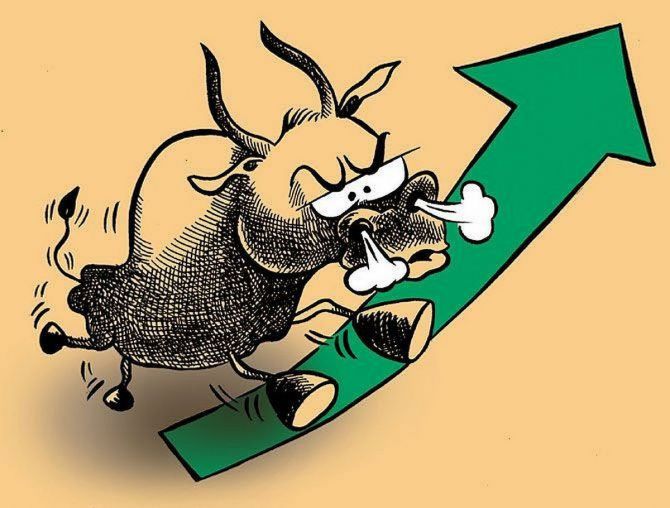Since October, FPIs have sold over $26 billion worth of stocks, which is the largest selling ever seen in India, observes Akash Prakash.

One of the surprising developments of the last few months has been the relentless selling by foreign portfolio investors or FPIs.
These global funds have been selling between Rs 2,000 crore (Rs 20 billion) and Rs 6,000 crore (Rs 60 billion) a day, and since October the pace seems to have accelerated.
After the Russian invasion of Ukraine and the spike in oil prices, we have seen daily sale figures in excess of Rs 7,500 crore (Rs 75 billion/$1 billion).
Since October, FPIs have sold over $26 billion worth of stocks (net $20 billion).
This $26 billion is the largest selling ever seen in India.
Even in 2008, in the midst of the global financial crisis, the outflows were about $15 billion.
As a percentage of market capitalisation, the selling in the secondary markets since October 2021, at 0.8 per cent is almost exactly the same as the outflows at the time of the global financial crisis, or GFC.
The FPI shareholding, after peaking at 25 per cent (percentage of BSE 200 market capitalisation) in December 2020, has dropped to 20 per cent, an eight-year low.
Nearly 85 per cent of the selling is in financials and information technology, the two sectors with the largest weighting in FPI portfolios.
Given the different dynamics of these two sectors, this clearly demonstrates that the selling is not for specific sectoral reasons, rather global capital is exiting what they own and where they have profits.
India has seen the most outflows of any market in Asia in 2021.
Why are FPIs bailing out? There are many reasons, but some of the main ones that come to mind are as follows:
1. As it becomes clear that rates are going to rise globally as inflation surges and central banks fall behind the curve, liquidity will also slowly be withdrawn.
The central banks of the world have no choice but to tighten financial conditions.
India has traded like a growth stock.
With rates rising and liquidity tightening, long duration higher growth assets get hit disproportionately.
Given that India trades expensive and is priced for growth, it has come under pressure from global allocators.
India is a growth story where investors are betting on sustained and accelerated growth over a multi-year horizon.
All assets sharing these characteristics have faced pressure.
As value regains favour, markets like India will come under pressure.
This value versus growth tilt is a global phenomenon.
The move towards value has just begun.
2. India is one of the most expensive markets in the world at the moment, trading at 20 times forward earnings and at a 65 per cent valuation premium to the emerging market Asia average.
Despite the recent correction, it has still done far better than the EM averages over the last few years.
In 2021, India was up 26 per cent, while the MSCI EM average was down 3 per cent.
Given how poorly China, its technology sector in particular, has done over the last 12 months, and how much money has been lost there, there is a natural tendency to bottom fish.
Most allocators seem to feel that India has not corrected enough.
There are better risk/reward opportunities in other EM countries. Money is moving.
It is also a fact that in both 2020 and 2021, India had positive inflows despite the Asian region having large outflows (over $30 billion outflows in both years).
In a sense, India is now catching up with the rest of the Asian markets.
India is no longer a consensus overweight for most investors.
To further buttress the valuation point, global allocators point out that despite all the selling since October, India has only corrected by 9 per cent in dollar terms.
With a similar level of selling in 2008, markets had fallen by 72 per cent.
In 2008, markets had bottomed at less than 10 times forward earnings, today we are still at 20 times!
3. There is also the obvious oil shock, which has only compounded the unattractiveness.
Nobody wants to be overweight India when oil is surging and particularly when it crosses $100.
Historically, our economy and external accounts have come under severe pressure from such an oil price spike.
Most investors are convinced that the rupee will give way and the fiscal crumble.
There is a general move among EM investors to overweight commodity producers and reduce positions in commodity consumers.
India is in the middle of this portfolio shift.
Ironically, India's exposure to oil is only slightly above the Asian average at net crude oil imports of 3 per cent of GDP (imilar to Korea and less than Taiwan).
The more bearish also seem to be giving India no credit for the improvement in our external accounts.
Foreign exchange reserves of over $600 billion and the majority of capital flows being foreign direct investment.
What has impressed me is the resilience of the markets.
Sure we are down by 10 per cent this year, but so are global markets.
If someone had told me 12 months ago that India would face Rs 200,000 crore of foreign selling in just six months and oil would be at $130, I would never have guessed that the rupee would be stable at 76-77 and markets down only 10 per cent.
In 2008, in the face of far less absolute selling, markets fell by 72 per cent in dollar terms.
Markets are telling us something.
They are not going down beyond a point and are far more resilient than what one has seen historically.
The strength and conviction of the domestic investor base is visible.
Few people realise that from 2014 onwards, domestic institutions have actually invested more money into Indian equities than global players.
One can interpret the domestic investor confidence and market resilience in two ways.
One view is that the markets are signalling that we are on the verge of an economic and earnings upcycle.
Growth and corporate profitability will both surprise.
India is benefiting from numerous long-term trends -- be it digitisation, China+1, remote work etc.
Given this positive view, any correction is a buying opportunity and this is exactly what the domestic investors are doing.
The alternative view is that the locals are stuck in India and have nowhere else to invest.
They have to be bullish and have no idea or interest as to how expensive India is on a relative basis.
Foreigners will keep selling and are getting a great exit at inflated prices.
At some point, the domestic investor base will run out of ammunition or patience.
So who is right? The bullish domestic investor base that is convinced that India is poised to deliver strong growth and profitability or the sceptical global capital that are making a dash for the exits? We are in the more bullish camp but only time will tell who is right.
In the meantime, markets are likely to consolidate.
This consolidation phase is either a buying or selling opportunity depending on your long-term view.
Akash Prakash is with Amansa Capital.
Feature Presentation: Aslam Hunani/Rediff.com











